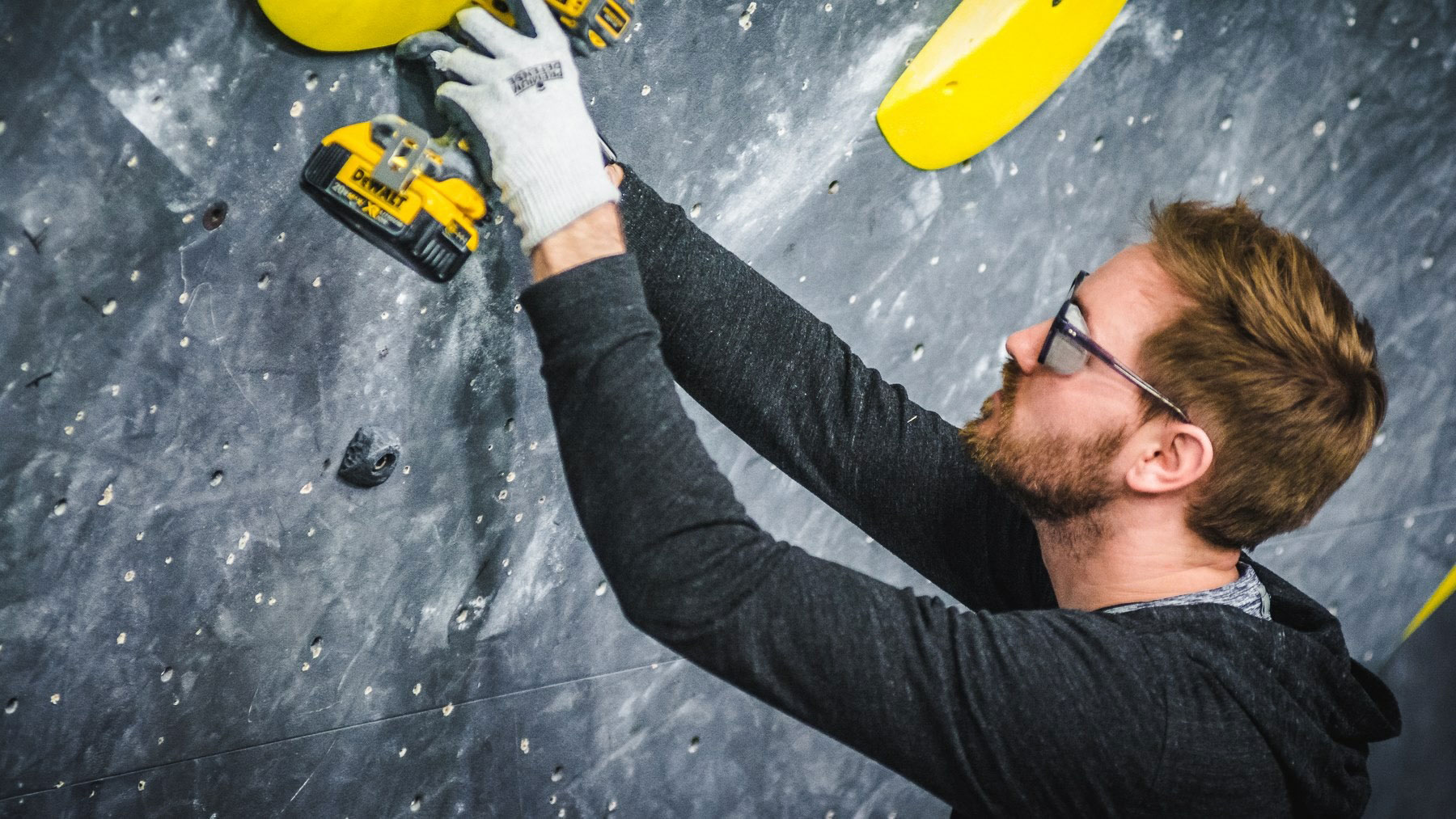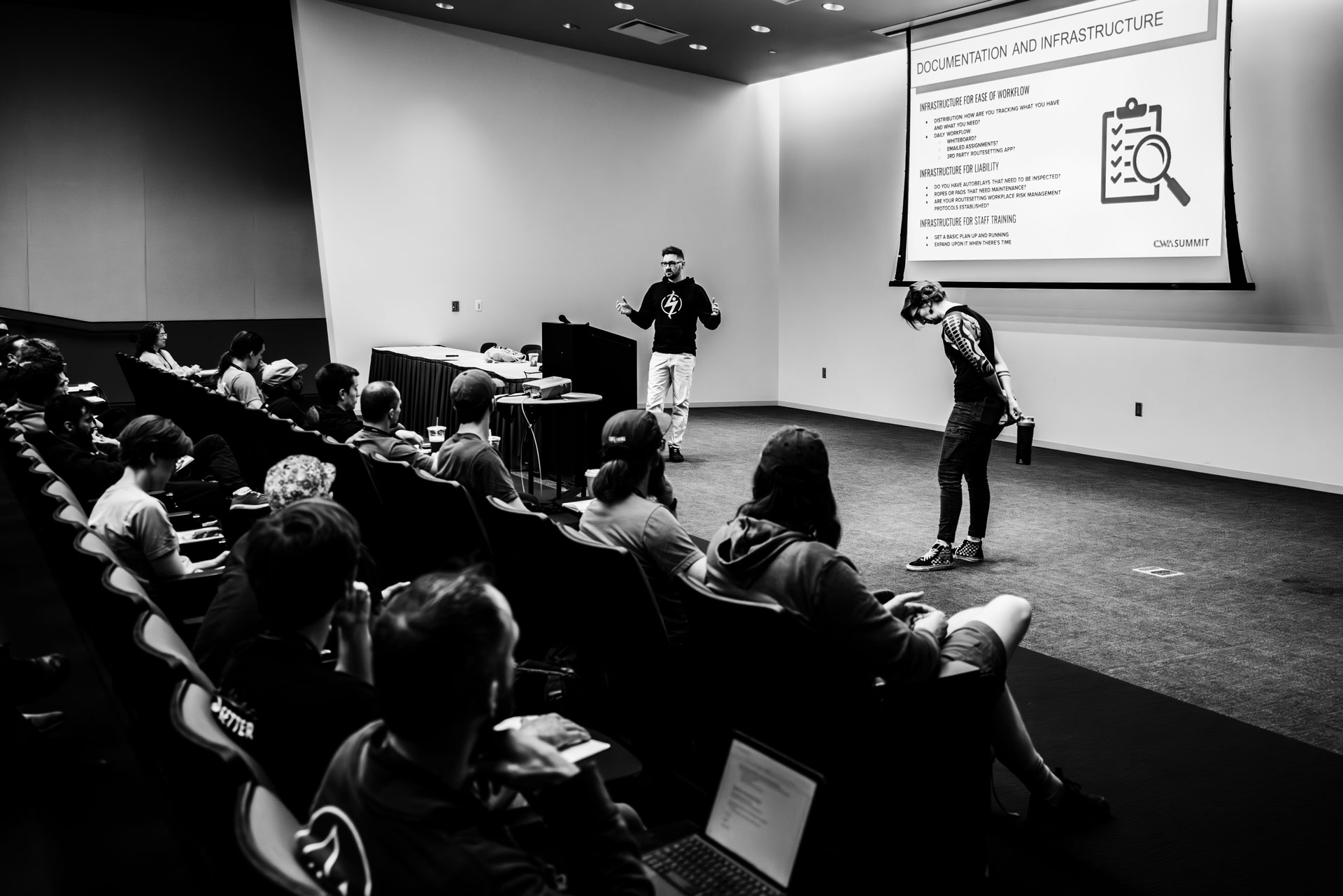
Today’s guests are Foxman McCarthy-James and Justin Wright. Foxman is the Head Setter at Alta Climbing & Fitness and Alta Boulders in Arizona, while Justin is the Director of Routesetting at Edgeworks Climbing & Fitness in Washington. Between the two, they have over 25 years of setting experience and even more climbing experience. Together, they cofounded Vortex Routesetting, a company that provides setter development and training, competition management, and consultations. In this wide-ranging conversation, Fox, Justin and I talk about the rise in demand for setting consultations, the bottlenecks of setting education, and the numbers behind the scenes of the setting trade, from pay and workload to setter professional development. Justin and Fox offer their expertise and insights, demonstrating how all of those trends are more interlinked than perhaps previously thought.
Thank you Strati and Trango for your support!
And thank you Devin Dabney for your music!
Timestamps
00:00 – Intro
02:50 – About Vortex Routesetting
05:15 – Changes leading to more demand of routesetting services
06:59 – An exodus of experienced routesetters
09:00 – Long-term effects of this exodus
10:17 – The potential for more formal setting education
14:25 – Bottlenecks in the setting trade
17:26 – Liability issues due to a lack of setting education
18:02 – Minimizing setting challenges in local gyms
21:14 – Will the industry lose knowledge?
30:20 – Routesetting data collection
35:04 – The big picture of data collection
38:50 – Hiring new setters for less vs. retaining experienced setters for more
45:01 – Closing
Abridged Transcript
CHEN: …I’m wondering if you can tell us what a routesetting company is and what kind of services that kind of company might offer?
MCCARTHY-JAMES: So, there are a lot of different types of routesetting companies out there, but most of us provide some type of service, such as routesetting, putting together hold orders, or consulting for those things. I think our company is unique in the fact that we also are part of a bigger data collection project looking at industry practices for routesetting departments kind of nationwide. But again, most companies are going to offer some combination of consulting services—routesetting for comps, organizing teams, and just general consulting…
Why are we seeing this kind of small explosion of these [routesetting] companies coming onto the scene in the last couple of years or maybe half a decade? What has changed about the industry that’s kind of creating this demand for the services that you and many other companies offer?
WRIGHT: I feel like there’s been an explosion of gyms. There are potentially more gyms opening than routesetters that are being created, paired with this issue where routesetters decide at some point in their career that routesetting is no longer sustainable or maybe isn’t financially viable, or maybe they’re getting too old and they’re tired of pulling hard, or whatever the reason is. And so, they’re dropping off and it’s creating this void. It’s like a supply and demand issue I see…
Why do you think that we are experiencing this kind of exodus of experienced routesetters?
WRIGHT: I think there are a couple of reasons. The way I would define routesetting is sort of like a skilled manual labor plus athlete job, right? And the athlete part is a very taxing part. Not everyone can sustain that for a really long time. There’s also this wage conversation that’s happening…The industry is still in its infancy and there isn’t a whole ton of money, especially when you compare it to some other fields that are booming right now, like tech or something like that…It’s like you have a decision: you could work hard and do what you love and you can stay in it because you have this passion, or you could want to have the capacity to buy a house or whatever and you say, “Oh, well, I could just learn how to code and make six figures easily.” Maybe not easily, but I think we’re seeing a lot of that…

Do you think that this exodus of experienced or middle-experienced routesetters leaving the industry is going to create any problems in the long run, for the industry as a whole?
MCCARTHY-JAMES: I think one thing that we’re already seeing—kind of like you alluded to, Holly, and that Justin talked to—is head setters who are leaving. I know in my region there are a bunch of head setters who might still be interested in being part of the climbing industry even in routesetting but have no desire to be running programs or any sort of management. And I think that’s a combination of largely that wage issue that Justin’s talking about. If we can do something mindless for $25 an hour and then pursue the thing that we love—climbing—on our own time, then you start to draw that super experienced crowd away from those mentorship roles. They’re not being compensated in a way that supports growth in the industry for the newer generations. So, people are looking for education anywhere they can get it, and people are exiting in the most experienced roles…
As more gyms open to the public, I think the need for qualified professionals might become apparent through liability issues. So, if you have people who are not properly educated or trained, and you have a bunch of new gyms opening up, a bunch of new climbers coming in, there may be a gap in education that leads to liability issues and might ping that onto gyms’ radar as a need—to get their setters trained and create even more of a demand for some sort of standardization in the educational process.
When you talk about liability issues, are you talking about potentially hazardous situations for a clientele or for the setters themselves?
MCCARTHY-JAMES: I think either would be an issue. If you have setters who aren’t properly trained in how to attach things to a wall or if you don’t have rescue scenarios ready for setters who are working at height, I think either would be an issue. And right now, like you said Holly, it is a very niche market. And I think that making sure that the education is keeping track, to make sure that everybody is properly trained, is going to be really important as the industry grows.
Let’s say you were a head setter or a director of setting or someone in a leadership position. What can you do now as the industry is kind of developing and blossoming to minimize some of these problems in your home, local gyms?
MCCARTHY-JAMES: I think the easiest answer—which is, I don’t know, feels too easy—is just invest in routesetter education and professional development. So, being willing to spend time and money to send routesetters to available clinics and trainings—CWA clinics if they’re available, USAC clinics if they’re available, Work at Height clinics—and getting your setters certified. If you’ve got a boom lift, getting your setters certified to operate that boom lift. That’s a very easy answer, but just investing in that…

You mentioned you have been collecting a lot of data. Can you tell us a little bit about what numbers you are collecting?
WRIGHT: So, over the last maybe three or four years we’ve been collecting data, we probably have information on maybe a little bit over 100 gyms. And we’re constantly updating it because, if the last couple of years have shown us nothing or even the last six months, inflation has changed pay rates considerably. And so, we are looking at what routesetters are making, trying to do some analyzing there. We’re looking at what expectations gyms have on their teams, specifically in output information. So, “How many boulders are you asked to do in a day?” And similarly for ropes, although we quantify that by how many feet you set, just because different people have different heights for rope walls and it’s an easier way to track. And then there’s a few other things that we look at that are less asked for—things about risk management policies, what PPE they’re using…If it’s a rope gym, are they using the two-rope system. And what’s really cool is we’ve gotten enough aggregate data where we’re able to report on it…
MCCARTHY-JAMES: Just to throw a little more context in there…Justin went through those key pieces of data that everybody wants to know, which is: “What are you getting paid? How many boulders are you setting per day? How many rope routes are you setting?” And we’re also collecting that all within the context of: “How many linear square feet is your gym? How tall are your walls?”—getting a good picture of what the gym itself looks like, because obviously gyms across the country vary wildly. We don’t want to be comparing apples to oranges. A single family-owned, 10,000-square-foot bouldering facility, we don’t want to compare that to a 40,000-square-foot roped facility—it makes no sense. We’re looking at the size of teams, we’re looking at the annual attrition rates of teams, just trying to get as big of a picture as possible. So that when we have conversations with owners or individual routesetters, we’re able to look at comparable gyms and provide them with a good sense of: “If you’re an ownership team or a management team, what should you be providing to your routesetters in order to be competitive?” Down to: “Are you providing tools for your gyms?” For a lot of gyms that seems a given…but for some gyms it’s not. And then for routesetters, if you’re in this area working for this type of gym: “What is an average pay rate that you can be asking for? What’s reasonable? What are your benefits looking like?” So, getting as much information in as reasonable a context as possible. Because, again, there is such a broad span of different types of gyms out there…

So, now that you have been collecting this data for, you said, three years, what does the big picture tell you? What does that data tell you about the industry? Are there any takeaways that you want to share with our audience?
WRIGHT: …My thought would be: there’s room for growth. I think I was a little surprised how many gyms are not requiring certain layers of PPE, how many gyms aren’t providing their tools to their routesetting staff—small things that if you work for a larger gym operation and have all of these things available to you, you might sort of expect it. But that’s not necessarily always the case. And so, I don’t necessarily think that anyone’s doing this on purpose or because they know they should and they’re choosing not to. I think that there’s an education, and I think part of this data collection is to help shed light on these things…
MCCARTHY-JAMES: I think my biggest takeaways were a lot of routesetters and a lot of gym owners in the last two years have assumed that they can focus their competition locally. And what we’ve seen is a few different things…One, gyms are having to compete for routesetters, especially experienced routesetters, on a national scale. So, when Justin and I are hiring for each of our gyms in different areas, we’re often competing for the same pool of people. And so, any gym that is trying to hire experienced routesetters needs to be nationally competitive. And similarly, that location base doesn’t translate to pay in the way that I expected, at least. So, those hubs for climbing are often not the leaders in wages and benefits and workloads, mostly because they’ve got so many climbers who are really interested in routesetting, but that doesn’t translate to experience. And so, if you’re cycling through new routesetters because the psych is high—every four months, six months, a year—the cost to your company is going to be so much higher than if you can attract a talented candidate and retain them for five years, eight years, ten years…
So essentially, you’re saying that for a gym it might be more cost effective to shell out the big bucks to hire the more experienced setter who might stay for the long term versus trying to train a new setter?
MCCARTHY-JAMES: Definitely. I mean, the way that I think about a lot of the roles within the gym where I’m Head Setter is how much effort the rest of the team needs to put into mentoring a setter. So, if somebody comes in and they are able to, one, put up their work efficiently—quality work—and then they still have the bandwidth left to mentor somebody else, then that’s value that they’re bringing to our routesetting team. But if I need to train up a new routesetter, then that’s resources that the team is then having to put into that person. So, it becomes a deficit. It’s an investment, right? And if we’re investing into that person, we want for them to be able to stay around and then put that return on the investment that the gym has put into them. If we’re not paying them well enough, they’re going to move on to greener pastures where they’re able to earn a living. And so, all of that investment that a gym has put into a newer routesetter is probably just going to go elsewhere…

Holly grew up in Taiwan and Hong Kong. Now she lives in Denver where she reports, writes and routesets. Beyond the Climbing Business Journal, her writing has been published by Alpinist Magazine, Climbing Magazine, Gym Climber and Sharp End Publishing. Holly’s motto has always been: “keep it interesting.”
Read our interview with Holly: Storytelling Through Movement










